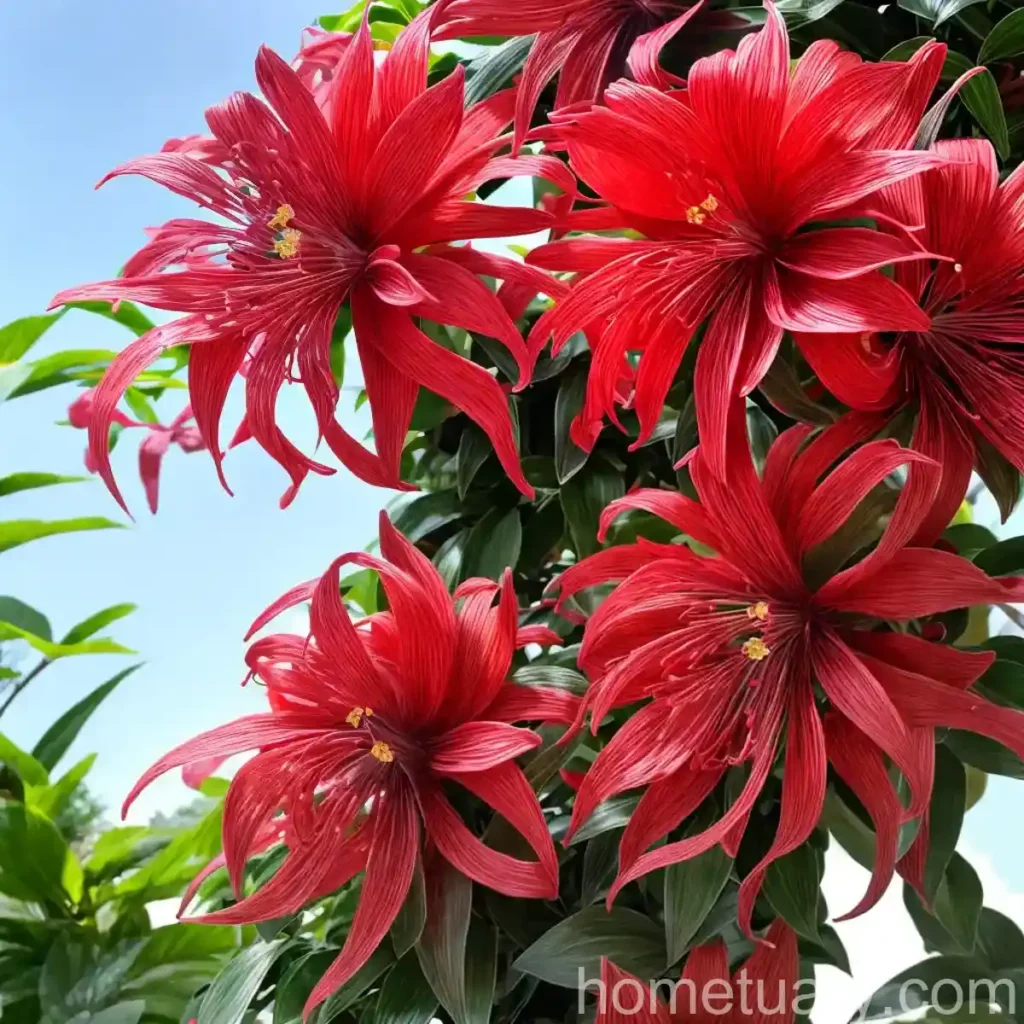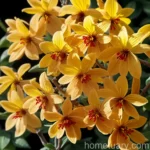Chinese Fringe Flower (Loropetalum Chinense ‘Shang-Red’ Red Diamond): A Stunning Ornamental Shrub
What is Chinese Fringe Flower (Loropetalum Chinense ‘Shang-Red’ Red Diamond)?
Chinese fringe flower, scientifically known as Loropetalum chinense ‘Shang-Red’ Red Diamond, is a mesmerizing and versatile ornamental shrub that has gained immense popularity among gardeners and landscapers. The plant belongs to the family Hamamelidaceae and is native to the regions of Japan, China, and southeastern Asia. Renowned for its vibrant, fiery red foliage and unique, fringe-like flowers, the Chinese fringe flower is a coveted addition to gardens and landscapes, providing spectacular visual appeal and a variety of practical uses.
Through this comprehensive guide, we will delve into the various aspects of the Chinese fringe flower, including its cultural requirements, uses, and maintenance practices. Whether you are a gardening enthusiast seeking to enhance the beauty of your outdoor space or a professional landscaper aiming to incorporate striking foliage and vibrant blooms into your designs, this guide is designed to equip you with in-depth knowledge about the Chinese fringe flower and how to care for it effectively.
Key Takeaways – Chinese Fringe Flower (Loropetalum Chinense ‘Shang-Red’ Red Diamond)
Before delving into the detailed information about the Chinese fringe flower, let’s outline the key takeaways that will be covered in this comprehensive guide:
- Cultural requirements for Chinese fringe flower
- Practical uses of Chinese fringe flower in landscaping
- Essential care practices including watering, sunlight, fertilizer, soil, and pruning
- Propagation methods and considerations for the Chinese fringe flower
- Growing Chinese fringe flower in containers
- Understanding the prevalence of common diseases and pests
- Useful tips from botanists for successful Chinese fringe flower cultivation
- Fun and intriguing facts about the Chinese fringe flower
- Links to external resources for additional information
Given the valuable information that will be presented in this guide, you’ll gain a thorough understanding of not only the captivating beauty of the Chinese fringe flower but also the best practices to ensure its optimal growth and longevity.
Cultural Requirements
Water
The Chinese fringe flower, like many ornamental shrubs, requires consistent moisture, particularly during its initial establishment and periods of prolonged drought. Adequate watering is vital for the plant’s overall health and growth, especially during the warmer months when evaporation rates are higher. However, it is important to avoid overwatering, which can lead to root rot and other moisture-related issues.
Water Needs:
- Regular, deep watering during the plant’s establishment phase
- Monitor soil moisture levels to prevent waterlogged conditions
- Water more frequently during dry spells and hot weather
Sunlight
In terms of sunlight requirements, the Chinese fringe flower thrives in locations that offer full to partial sun. Ideally, the plant should receive at least 6-8 hours of sunlight daily to promote robust growth, vibrant foliage coloration, and prolific flowering. However, it can tolerate some shade, making it a versatile choice for various garden settings.
Sunlight Preferences:
- Full to partial sun exposure for optimal growth and flowering
- Tolerates partial shade but may result in reduced flowering
- Protection from intense afternoon sun in hotter climates
Fertilizer
Proper fertilization is essential for promoting healthy foliage and abundant blooms in the Chinese fringe flower. An all-purpose, balanced fertilizer formulated for flowering shrubs can be applied in spring and early summer to provide the necessary nutrients for vigorous growth and flowering. Additionally, organic compost can be incorporated into the soil to enhance its fertility and structure.
Fertilizer Requirements:
- Apply a balanced, slow-release fertilizer in spring and early summer
- Use organic compost to improve soil fertility and texture
- Avoid excessive application of high-nitrogen fertilizers to prevent foliage at the expense of flowering
Soil
The Chinese fringe flower demonstrates a degree of adaptability to various soil types as long as they are well-draining and rich in organic matter. However, it thrives in slightly acidic to neutral soils that are moist but not waterlogged. Amending the soil with organic materials such as compost or peat moss can significantly improve its texture and nutrient content.
Soil Preferences:
- Slightly acidic to neutral pH (5.5-6.5) for optimal growth
- Well-draining soil with good moisture retention
- Incorporate organic matter to enhance soil structure and nutrients
Pruning
Pruning is an essential aspect of Chinese fringe flower maintenance, playing a significant role in shaping the plant, promoting flowering, and removing dead or damaged growth. Regular pruning, preferably after the flowering period, helps maintain the plant’s desired form and size, ensuring its overall health and visual appeal.
Pruning Tips:
- Prune after the flowering period to maintain shape and size
- Remove dead, diseased, or overcrowded branches
- Lightly trim to encourage new growth and flowering
Propagation
The Chinese fringe flower can be propagated through several methods, including softwood cuttings, hardwood cuttings, and air layering. Each technique requires attention to detail, appropriate timing, and favorable environmental conditions to ensure successful root development and establishment of new plants.
Propagation Methods:
- Softwood cuttings: Utilize young, tender shoots for propagation during the growing season
- Hardwood cuttings: Harvest mature, woody stems during the dormant season for propagation
- Air layering: Encourage root formation on a stem while it is still attached to the parent plant before separation
Container Popularity
As a striking and versatile ornamental shrub, the Chinese fringe flower has gained considerable popularity for container gardening. Its compact size, attractive foliage, and unique flowers make it an ideal choice for adorning patios, decks, and other outdoor living spaces with vibrant colors and visual interest. When grown in containers, the plant can be conveniently positioned and cared for, providing an excellent option for individuals with limited garden space.
Container Common Diseases
Despite being a relatively resilient plant, the Chinese fringe flower is susceptible to certain diseases that can affect its overall vigor and appearance. Understanding the common diseases and their symptoms is crucial for timely intervention and effective management to prevent the spread of infections and ensure the plant’s health.
Disease Diagnosis:
-
Powdery Mildew: Characterized by the presence of powdery, white patches on the leaves and young shoots, often leading to distorted growth and reduced vigor.
-
Leaf Spot: Identified by the development of dark, necrotic spots on the foliage, potentially causing premature leaf drop and defoliation.
-
Root Rot: Manifests as wilting, yellowing foliage, and overall decline in plant health, often as a result of overly wet or poorly-drained soil.
Common Pests
In addition to diseases, the Chinese fringe flower may also encounter pests that can compromise its growth and aesthetics. Vigilance and prompt action are necessary to control and manage pest infestations effectively.
Pests:
-
Aphids: Small, sap-sucking insects that gather on the undersides of leaves, causing yellowing and distortion of foliage.
-
Scale Insects: These pests appear as small, waxy bumps on stems and leaves, draining the plant’s sap and causing weak growth.
-
Spider Mites: These tiny arachnids can infest the plant, leading to stippled, discolored foliage and the formation of fine webbing.
Botanist’s Tips
To ensure the successful cultivation and care of the Chinese fringe flower, consider the following expert tips provided by experienced botanists:
-
Monitor Moisture Levels: Regularly assess the soil moisture to prevent waterlogging or drought stress, promoting balanced growth and vitality.
-
Prune Judiciously: Implement strategic pruning to maintain the plant’s aesthetic appeal while enhancing its health and flowering capacity.
-
Provide Adequate Nutrients: Utilize a well-balanced fertilizer to supply essential nutrients, facilitating robust growth and prolific flowering.
-
Protect from Pests and Diseases: Regularly inspect the plant for signs of pests and diseases, taking preventive measures and targeted interventions as necessary.
Fun Facts
Uncover some fascinating and intriguing facts about the Chinese fringe flower that showcase its unique attributes and contributions to the world of horticulture:
-
The Chinese fringe flower is revered for its captivating, fringe-like flowers, which resemble delicate, wispy threads, adding an ethereal charm to the plant’s appearance.
-
In addition to its ornamental allure, the Chinese fringe flower has historical significance and cultural symbolism, being associated with traditional Chinese medicine and utilized for its purported medicinal properties.
-
Despite its delicate aesthetic, the Chinese fringe flower exhibits resilience and adaptability, with the ability to thrive in various environmental conditions and landscapes.
Now that we’ve explored the essential aspects of the Chinese fringe flower, including its cultural requirements, practical uses, and maintenance practices, you are well-equipped to incorporate this stunning ornamental shrub into your outdoor spaces effectively.
Links to External Resources
For further information and insights into the Chinese fringe flower and related topics, consider exploring the following external resources:
- Plant Propagation Techniques
- Plant Disease Management
- Ornamental Plant Pruning Guide
- Container Gardening Tips
- Pest Identification and Management
With the valuable insights provided in this guide and the additional resources available, you can embark on the journey of cultivating and appreciating the allure of the Chinese fringe flower to its fullest potential. Whether you are a novice gardener or a seasoned landscaper, the versatility and visual impact of this ornamental shrub are certain to enrich your outdoor environment and inspire awe and admiration.















